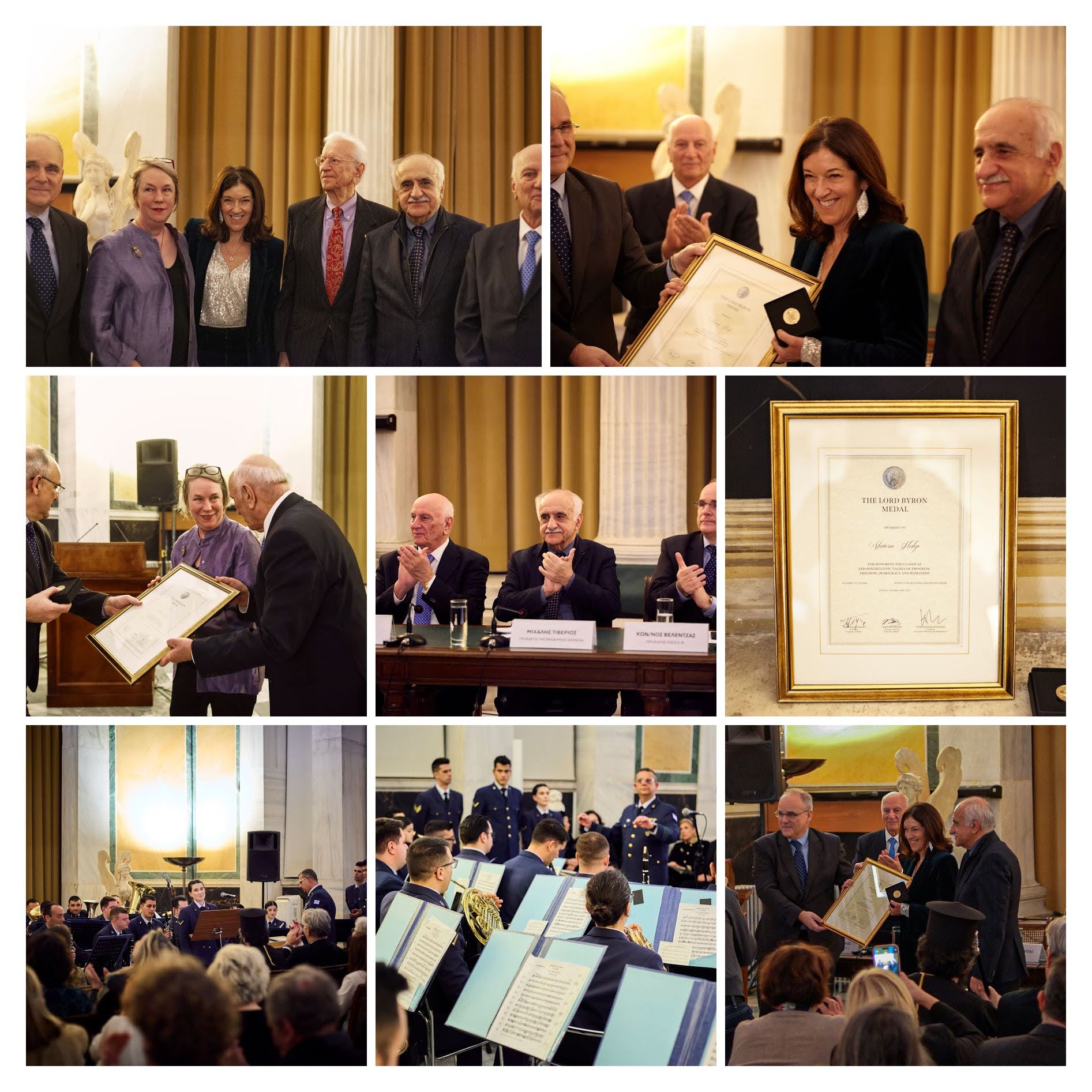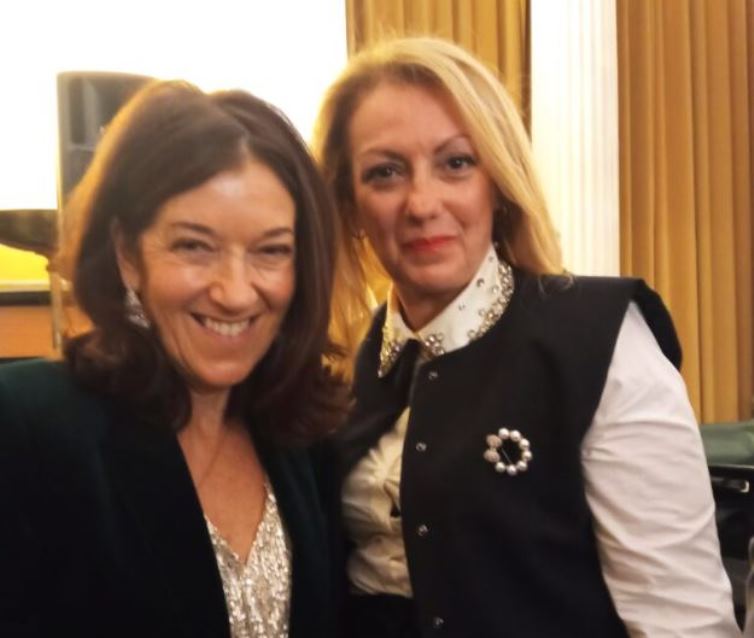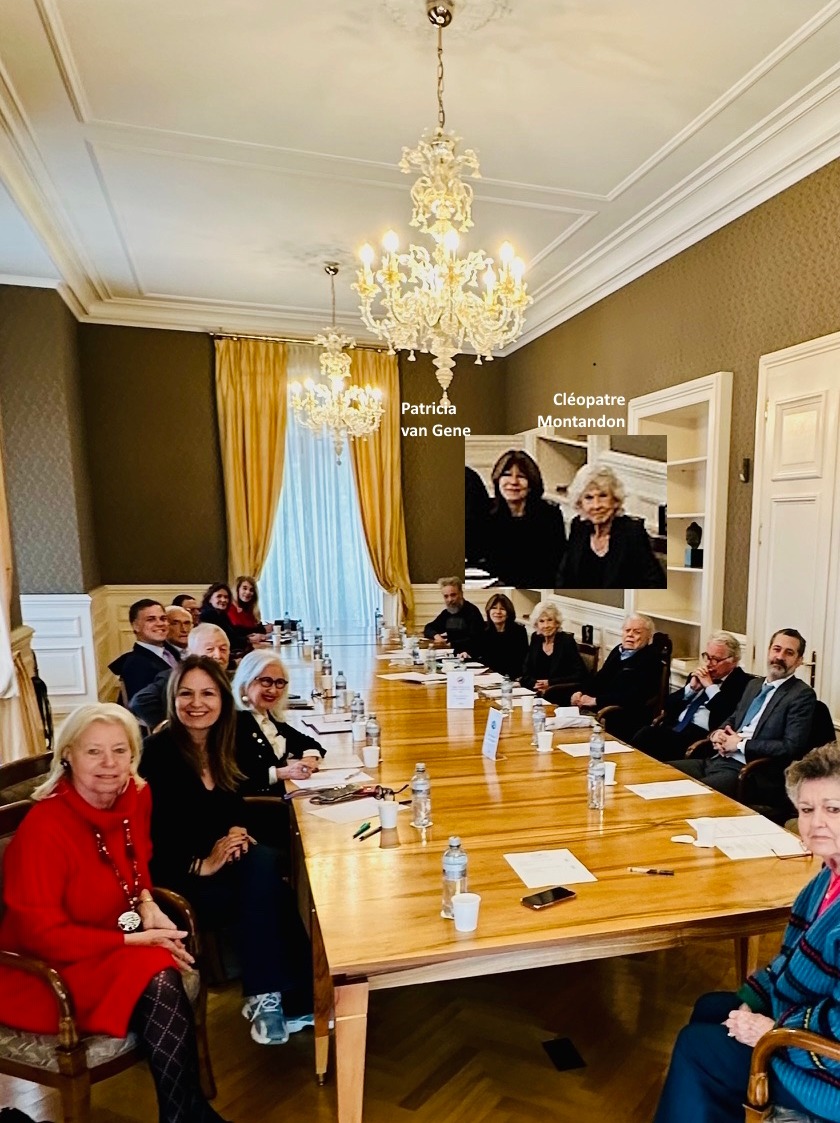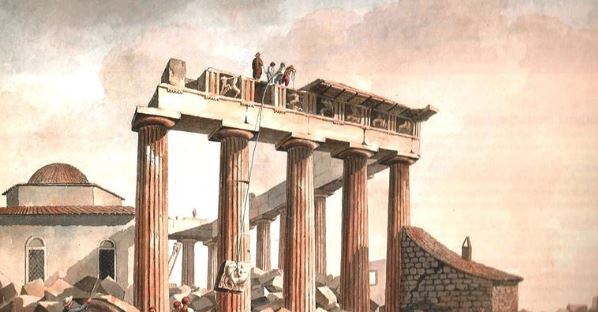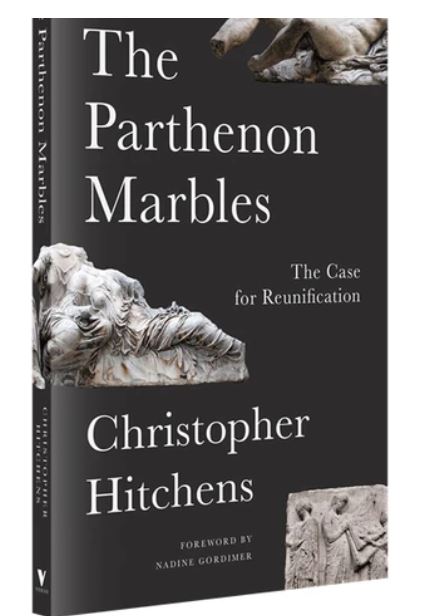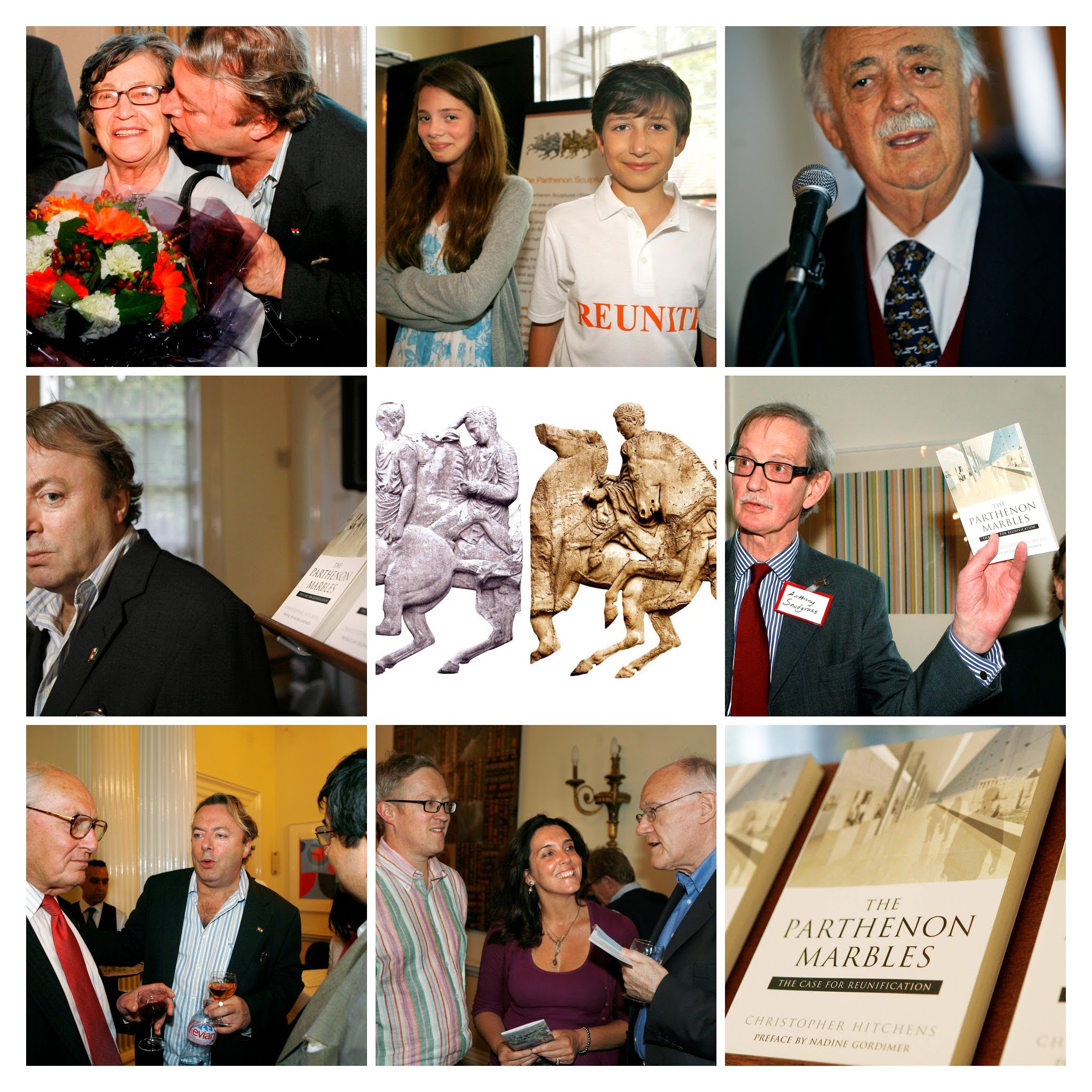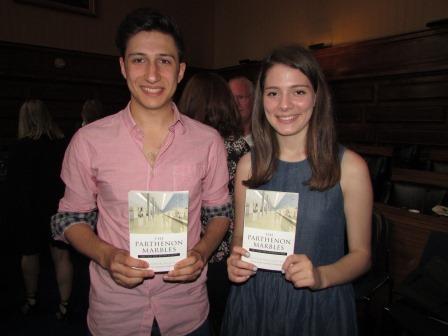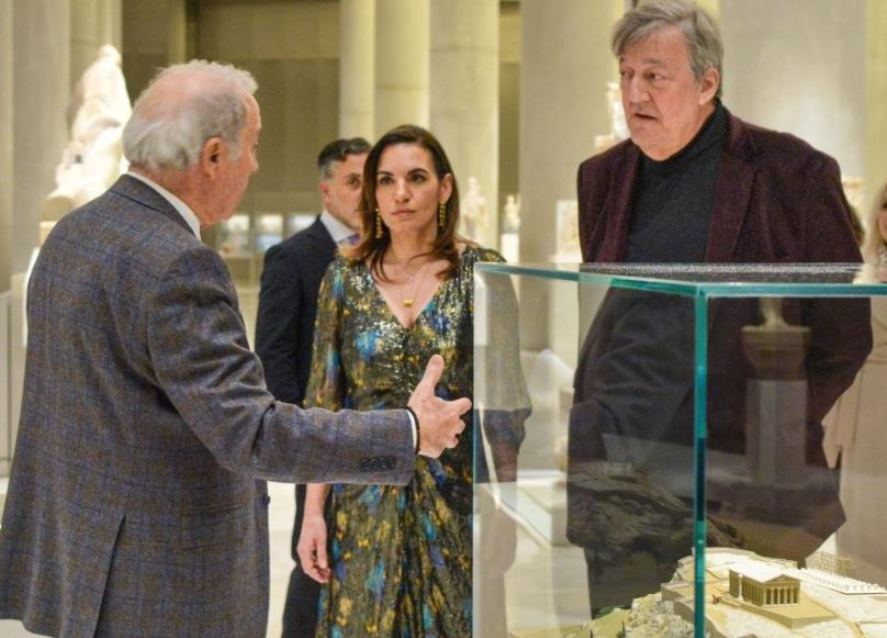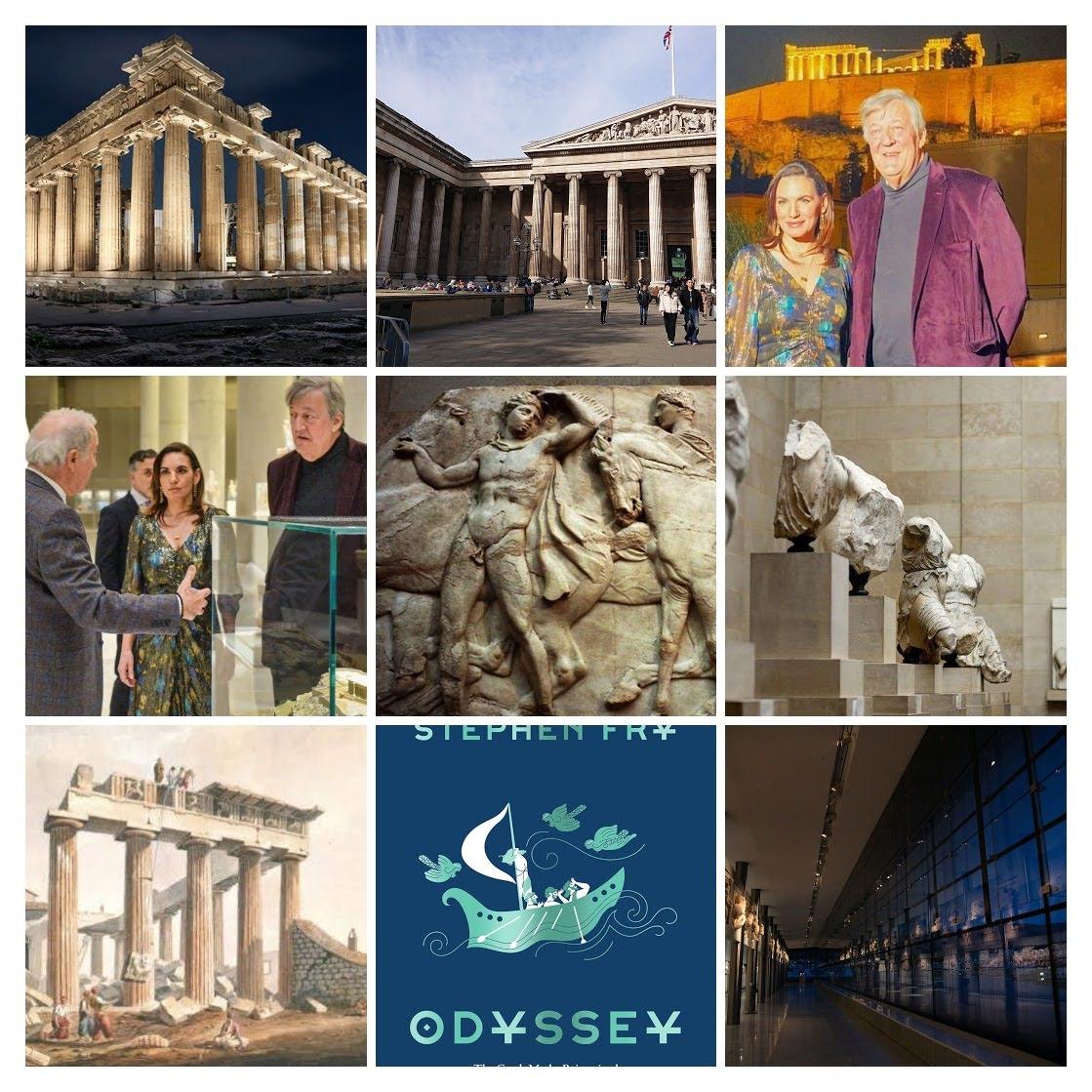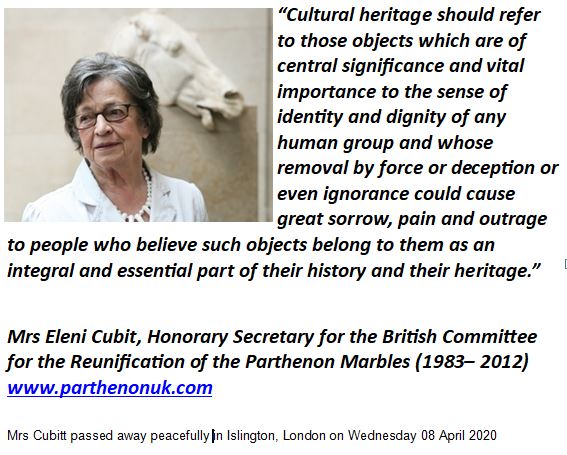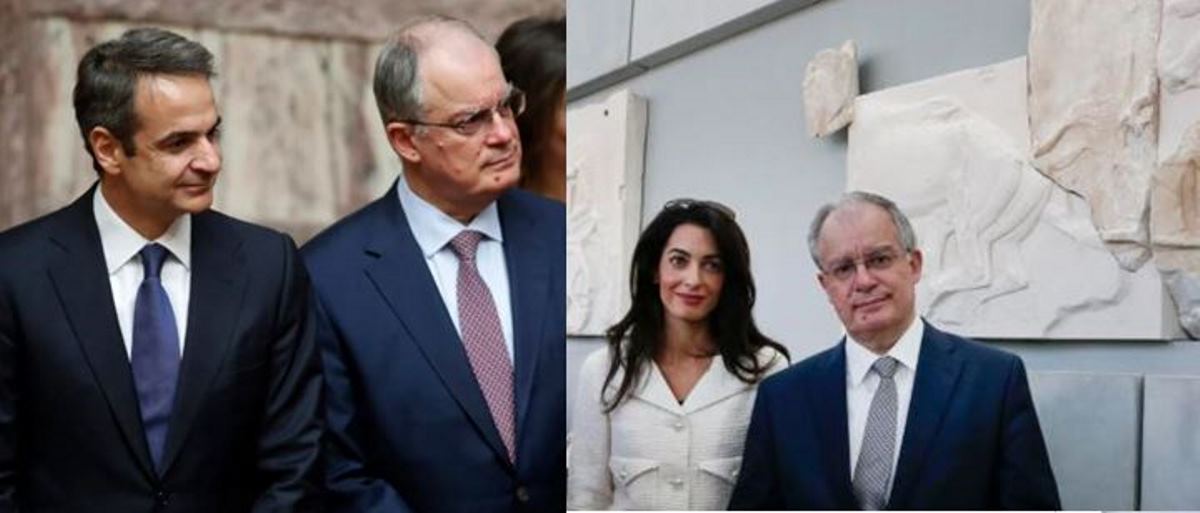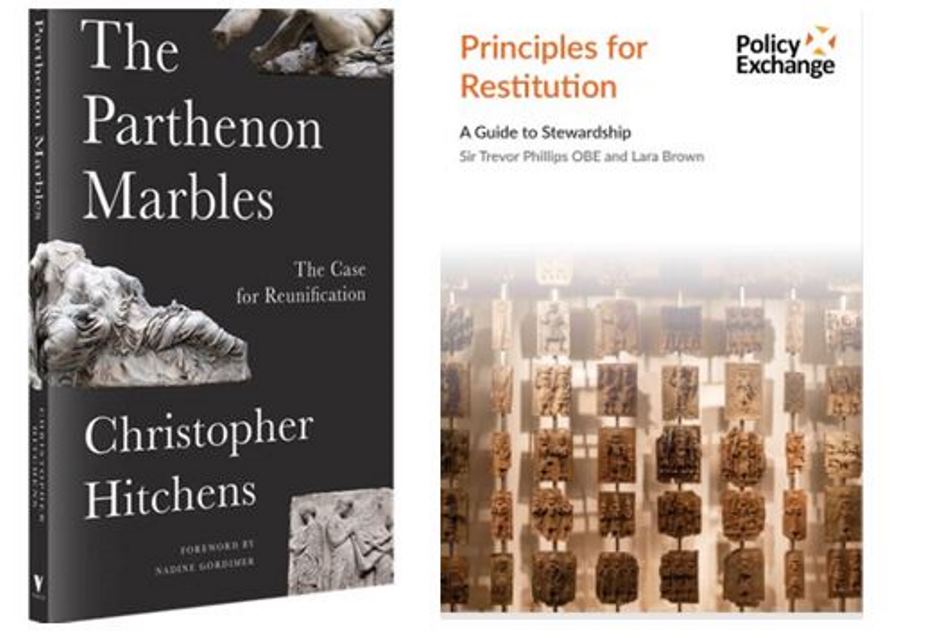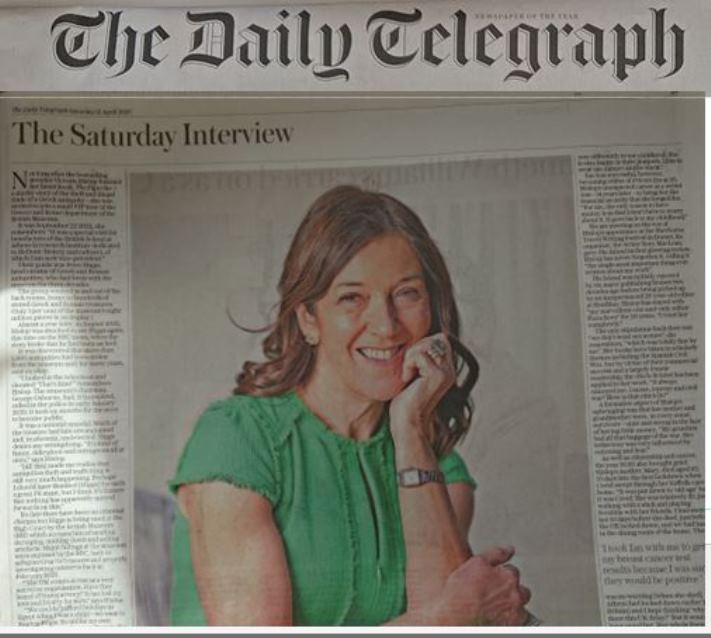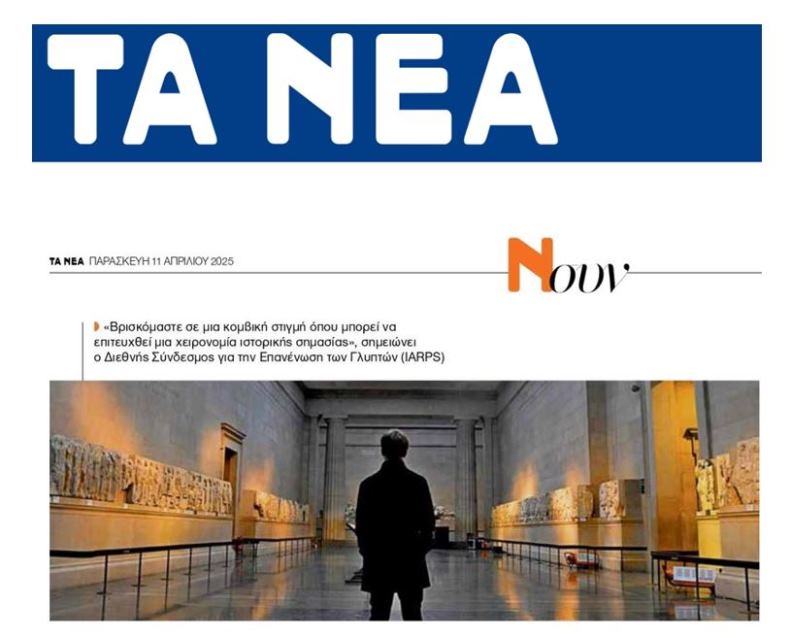And he continued: "Today's honourees, with the Greek Secretariat as their "excavation site" and the eternal field of research in the interpretation of the Greek landscape and the people of this nation, have worked and are working for many years to promote Greek culture and disseminate it as a common point of reference for all of us. Both chose to divide their lives between their countries of origin and work and Greece. For them, as for Byron, Greece is a homeland of choice."
The founder of the Society for Hellenism and Philhellenism (SHP), Konstantinos Velentzas, presented to the packed Academy of Athens the most important milestones in the course and the admirable work of the two laureates, distinguishing them as "two prominent personalities of letters and the arts, internationally renowned, who through their intellectual and social work give flesh and blood to what is defined today as Contemporary Philhellenism."
"Victoria and Alicia walk proudly on the path marked out by the great romantic poet, each with their own unique stylistic writing style, reinforcing the idea of freedom and camaraderie, against all kinds of injustice. Like Byron, Victoria Hislop and Alicia Stallings choose to live in this place and, reflecting on its history and literature, illuminate modern Greece through their words."
“When Victoria became a member of the Royal Society of Literature in 2024, she was asked to choose the pen of an acclaimed writer from her country to sign her entry into the Society. The pens belonged to Charles Dickens, George Eliot and Lord Byron. She chose that of Lord Byron, stating of her choice: I like to imagine that Byron carried it with him on his travels in Greece! ”
Inspired by Lord Byron's well-known phrases, " A thousand hearts unite in one common cause" and "Those who fight for a great cause never fail," he referred to the heartfelt participation of the two honourees in the significant event that took place in October 2024 at the Odeon of Herodes Atticus, to commemorate the 200th anniversary of the death of the romantic poet and the Year of Philhellenism, where their stirring recitations on stage with Lina Nikolakopoulou, brought a rapturous response from everyone.
Victoria Hislop and Alicia Stallings in thanking the Society for Hellenism and Philhellenism and the Academy of Athens for their awards reiterated their love for Greece and Greek culture, reaffirming the spirit of Lord Byron as always remaining relevant.
In particular, Victoria Hislop referred to Lord Byron and his love for Greece as well as his poetry, which she said, "As a writer, he managed to write with passion, originality and sincerity and touch the heart of every reader, knowing from his manuscripts that he laboured to find the right words, although the result seems as if it came effortlessly from his pen and it is as if you are hearing his voice."
"Lord Byron is a great inspiration for all writers. He certainly is for me. Many times Byron wrote for some important purpose to influence and lead others to action. Rarely were his texts simply for entertainment. His speech in support of Greece in Europe was important."
"If I were talking to Lord Byron my first words would be, 'You have succeeded. Your great struggle has been vindicated.' "

Alicia E. Stallings expressed her honour to receive the Philhellenism Medal, especially when it bears the name of the greatest Philhellene of all time. She clarified that “Lord Byron is not well known for his heroism in English-speaking countries, and he is not well known for his poetry in Greece. If Greeks know anything about his poetic work, it is usually the first four stanzas of his famous poem, The Isles of Greece .”
Continuing, "Byron, the man of letters, the greatest comic and satirical poet of his time, and the man of action and political mobilization, were not two different men, but one poet. But Byron knew that both words and deeds, both swords and odes, reach their peak, and shine brightest, in the darkest times.
Poets sharpen words. They help them keep their meaning sharp, in an era when tyrants and oligarchs dull them with the repeated blows with which they try to tame societies. When the battle seems lost, then more than ever, we need poetry.”
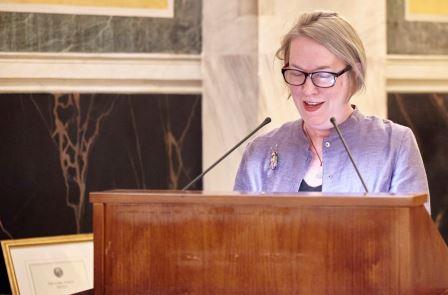
With a view to strengthening the extroversion of the Academy of Athens, its President, Michalis Tiberios, stated that for the first time, within the framework of the collaboration with the Society for Hellenism and Philhellenism and the award ceremony of the Lord Byron Medal of Philhellenism, a concert with an orchestra would follow the award ceremony.
The Music of Greece's Air Force conducted by the well-known and excellent artist, Alexandros Litsardopoulos, also featured wo exceptional and talented performers, baritone Angelos Mousikas and soprano Sofia Zova.
